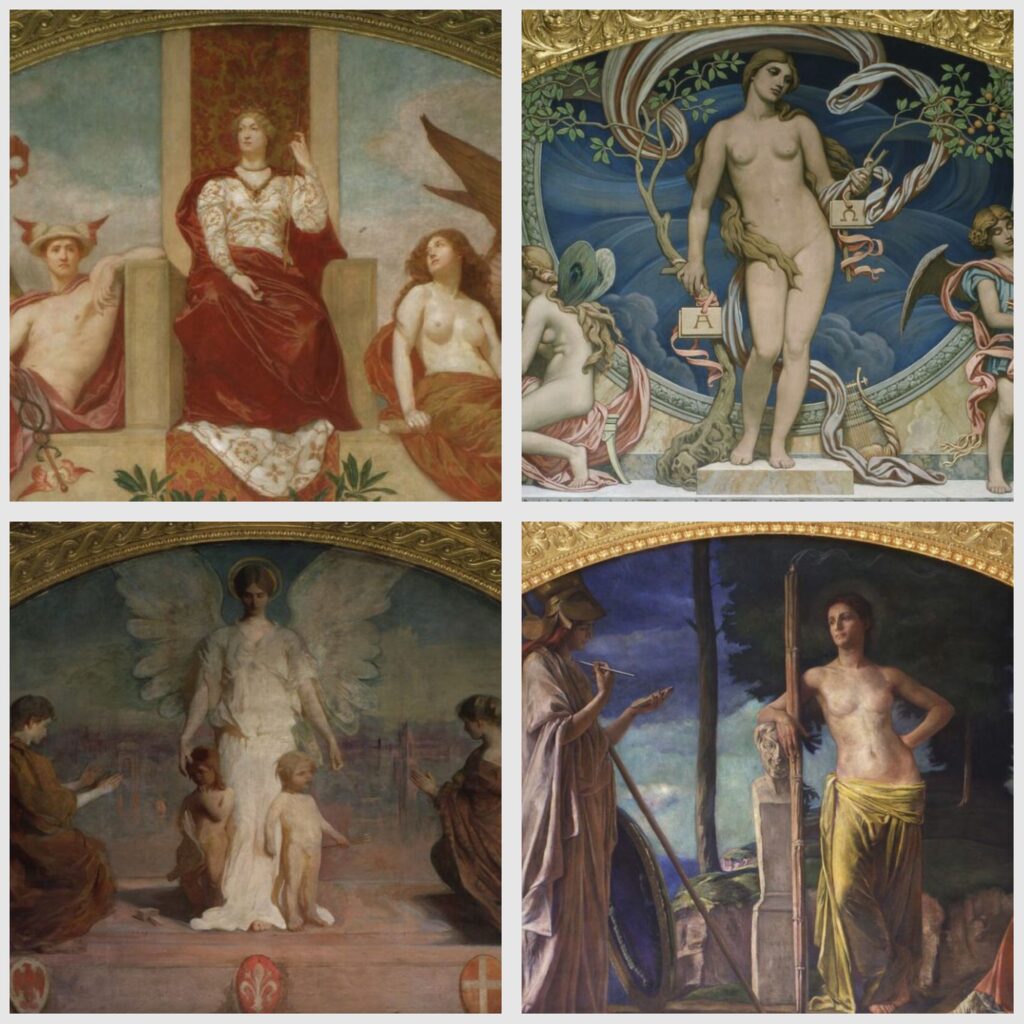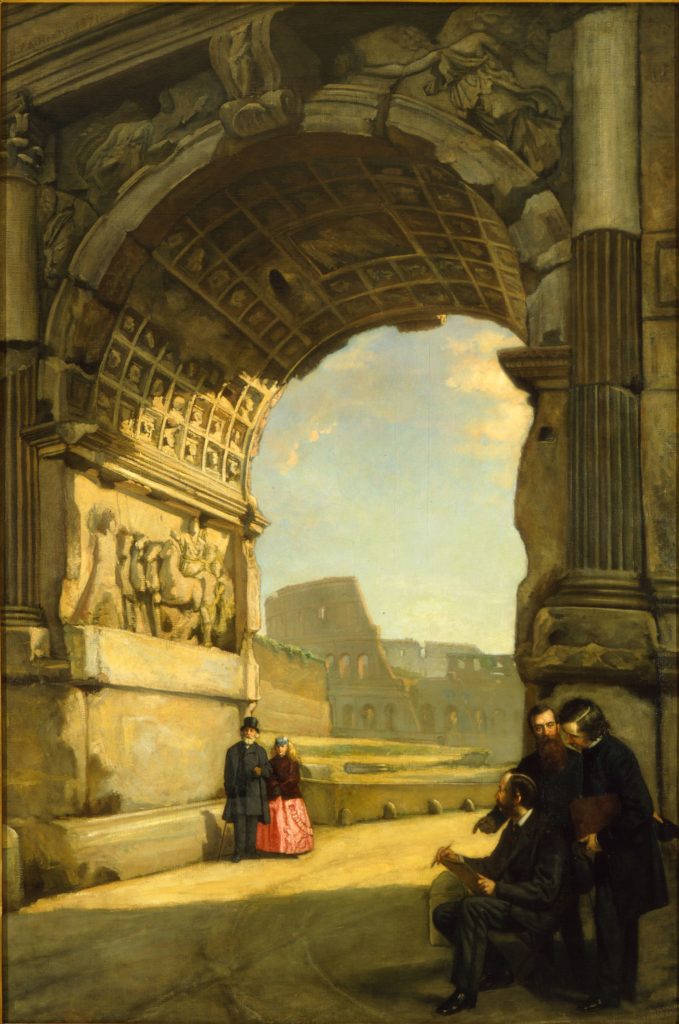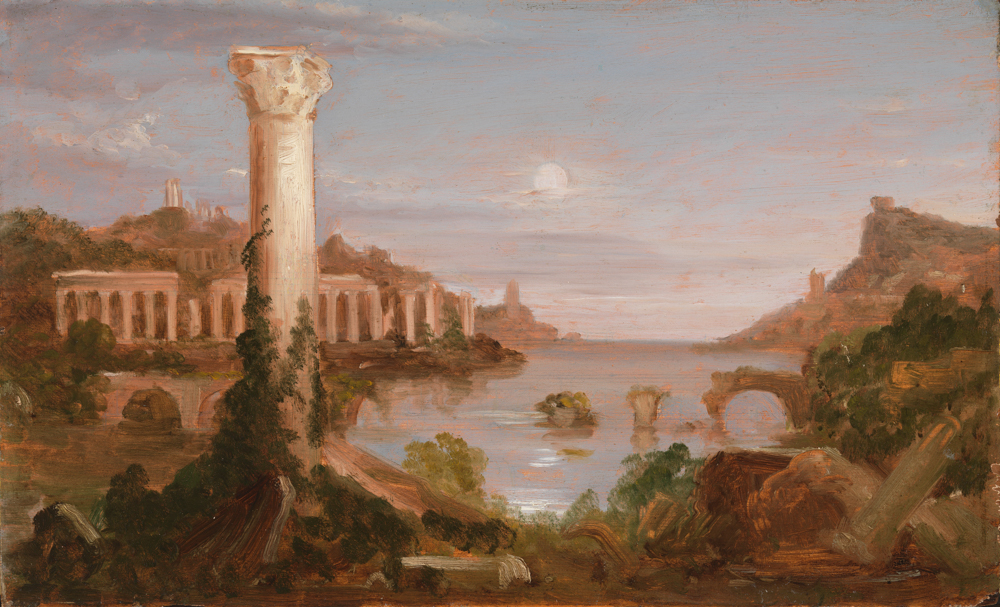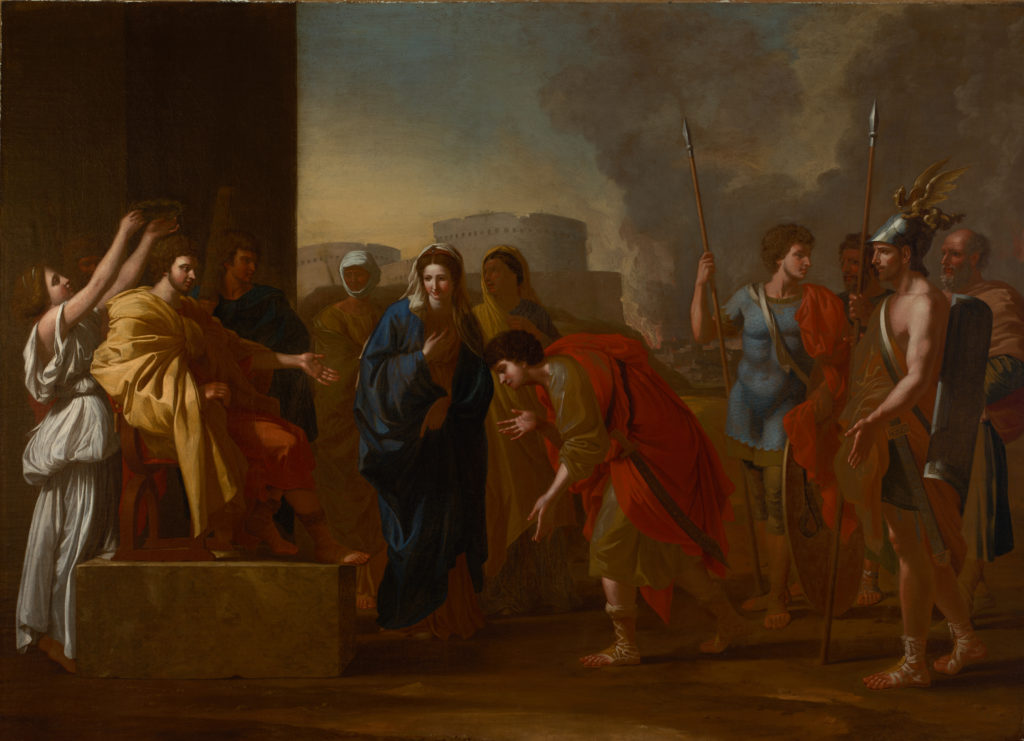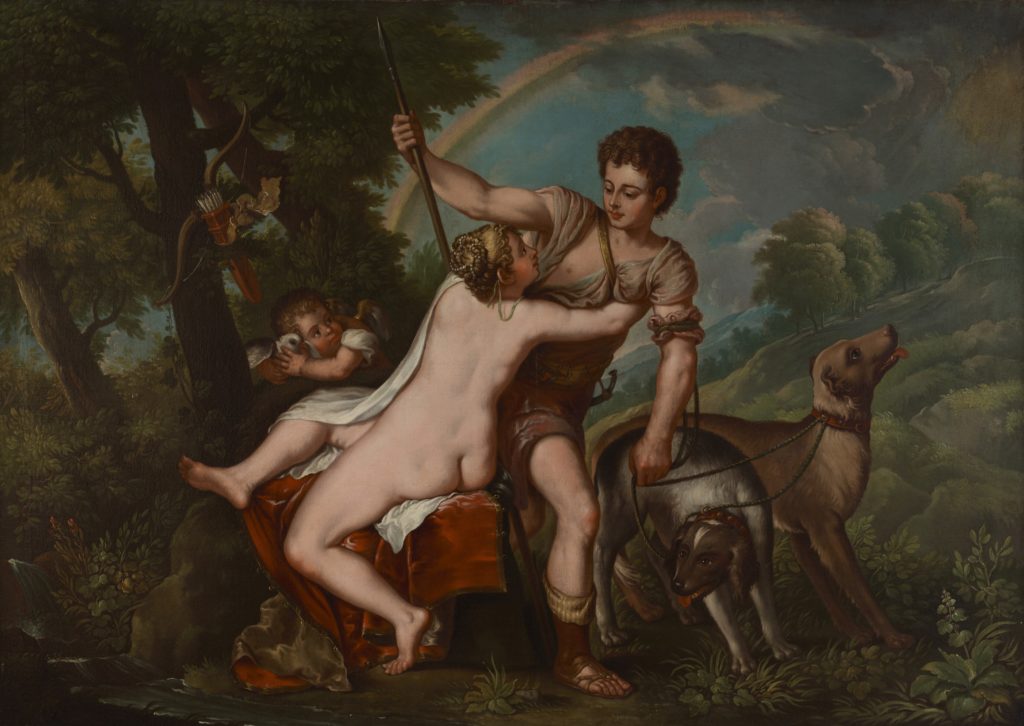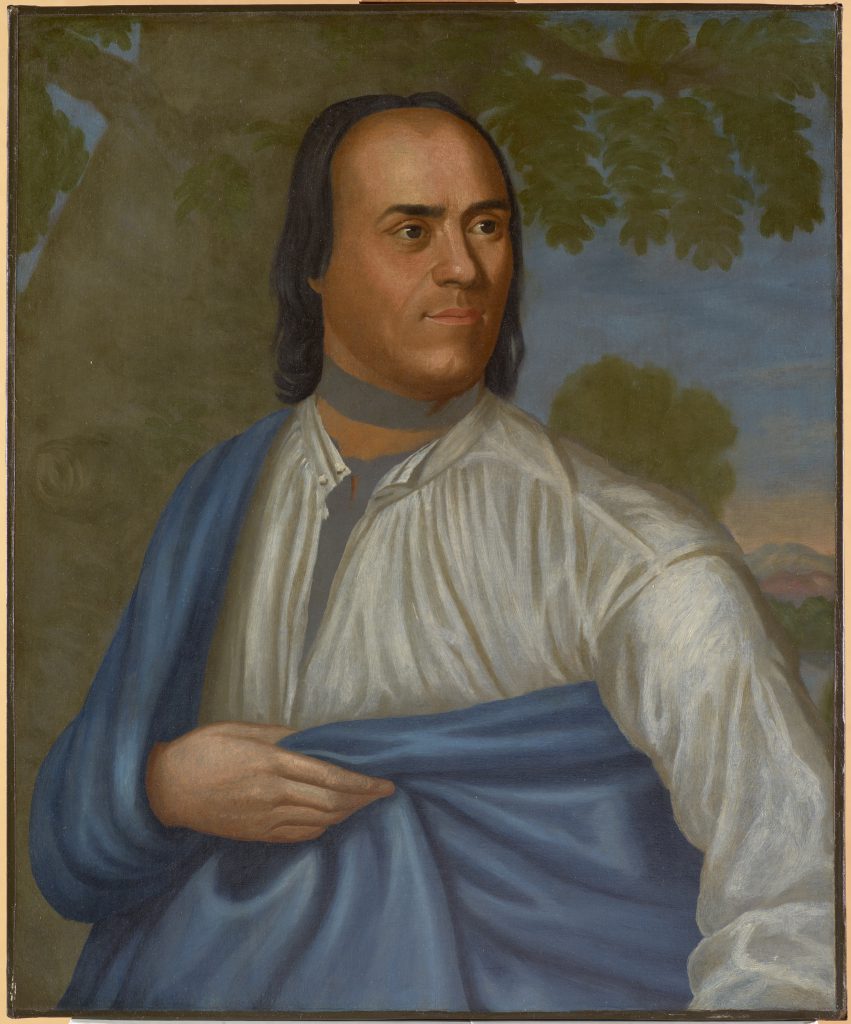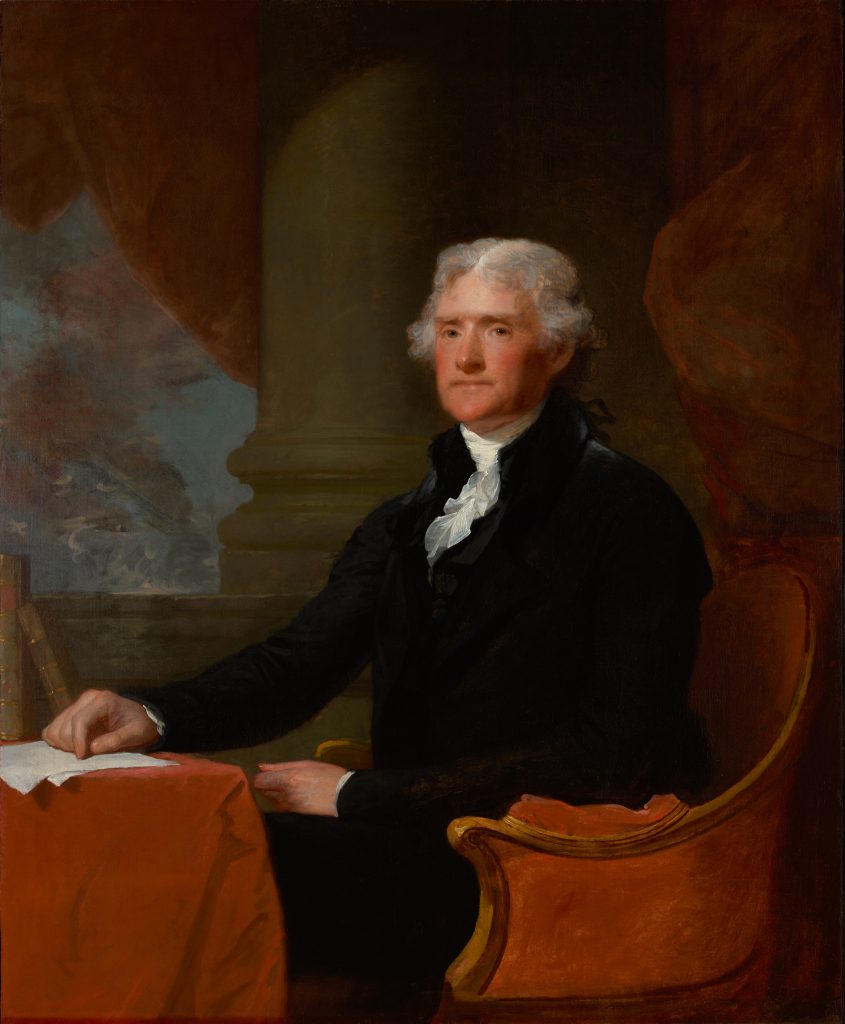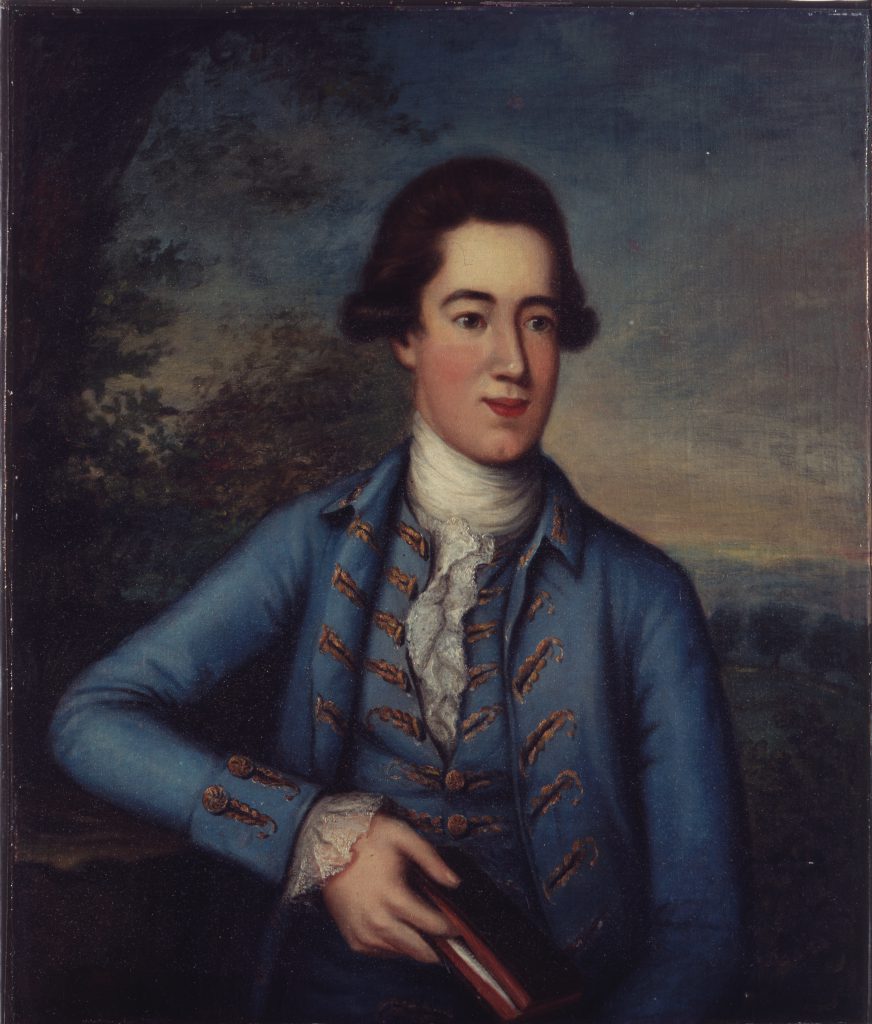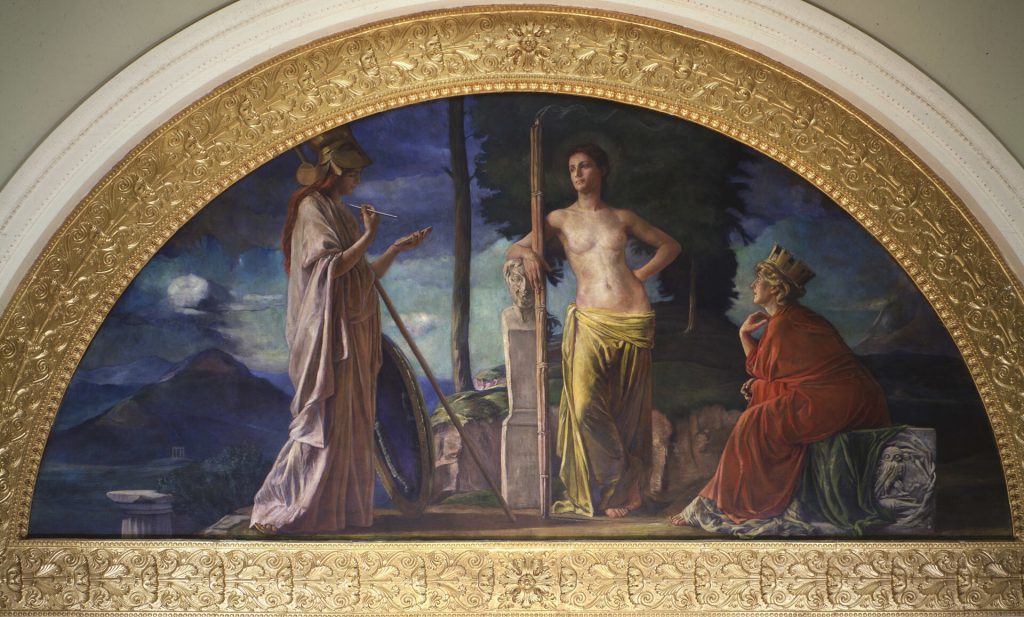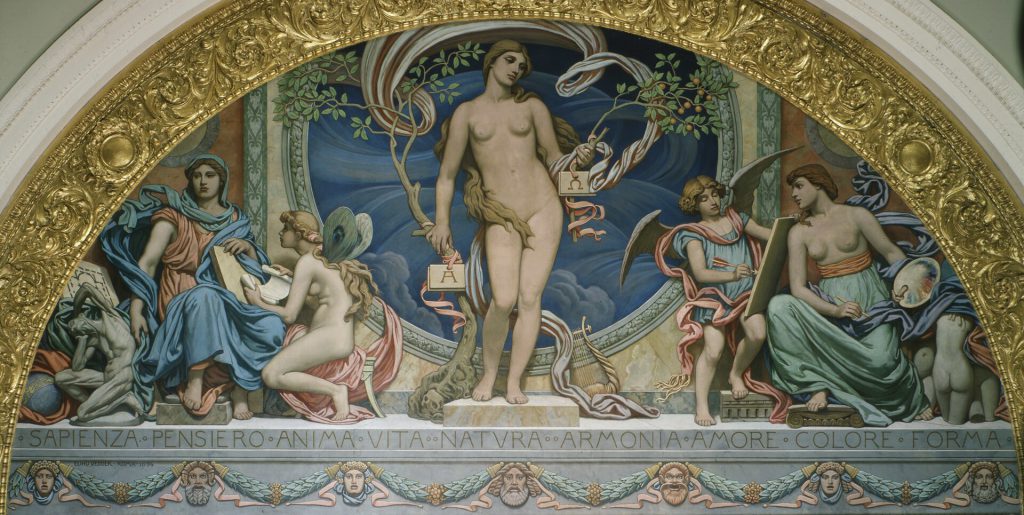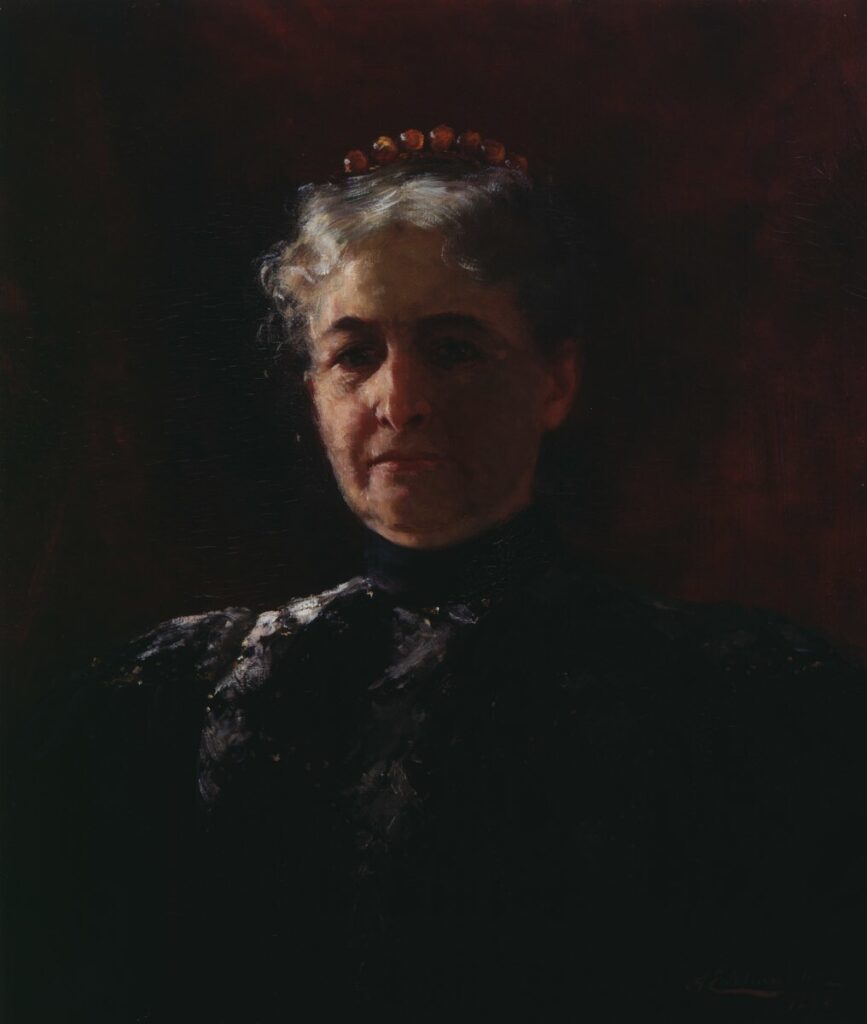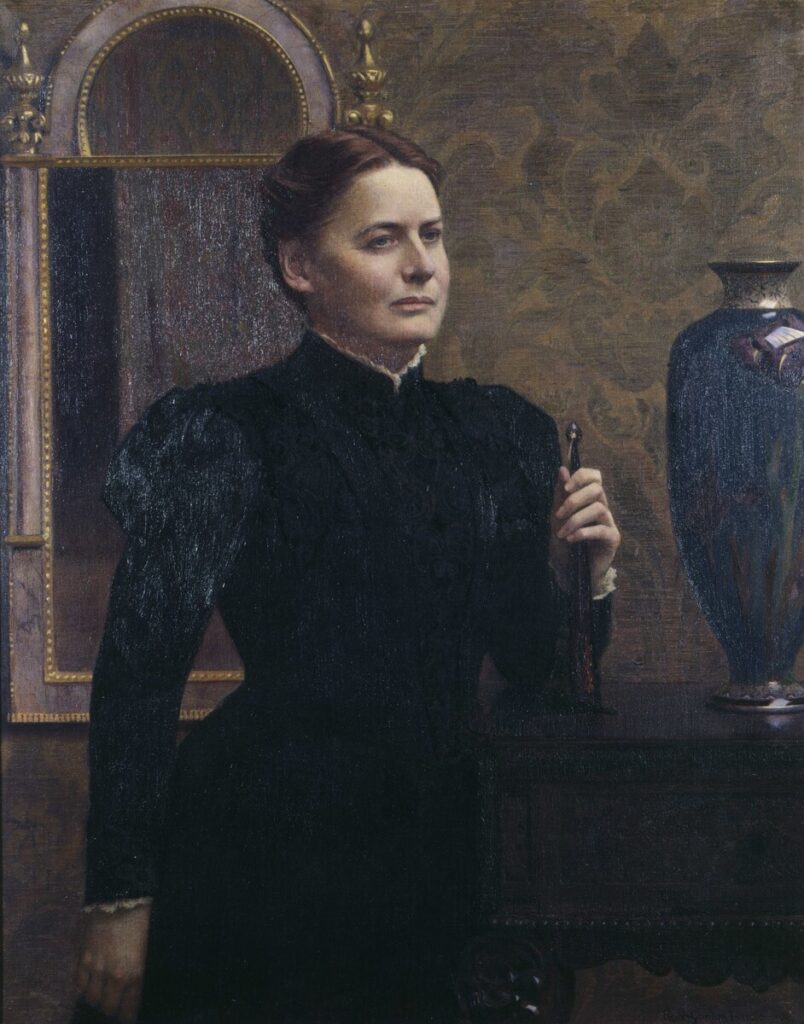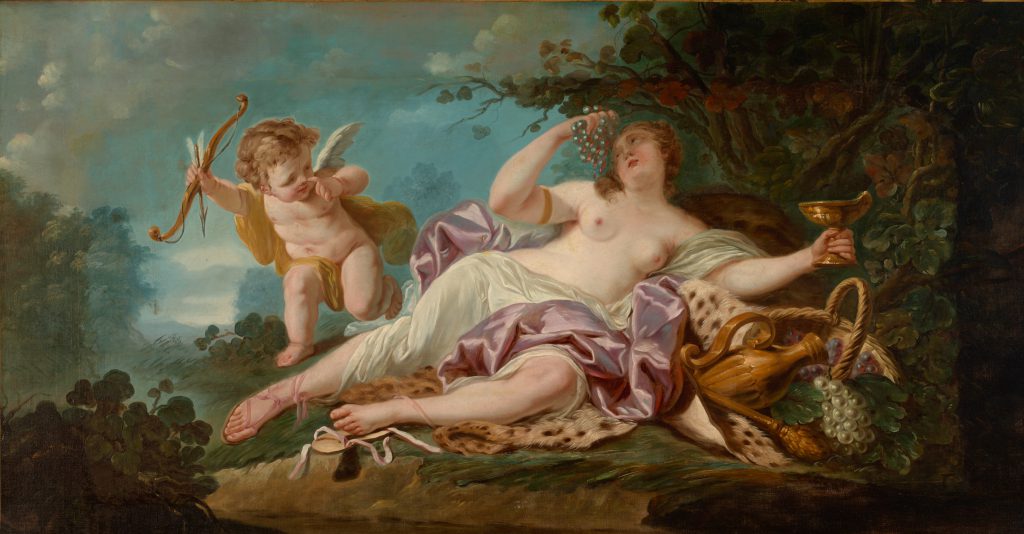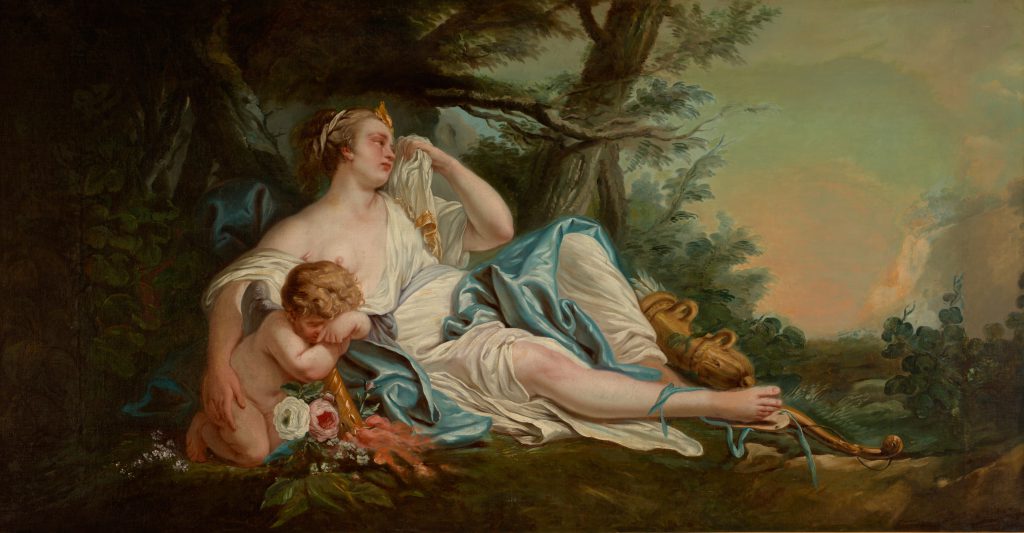
Bequest of Miss Mary Sophia Walker
1904.15This painting by New Hampshire-born John Rollin Tilton dramatically captures the ruins of the Greek Temple of Aphaea on the island of Aegina. Exhibited in Boston in 1880, Mary Sophia Walker acquired the painting shortly thereafter and later donated it to the College. The ruins of the Temple of Aphaea were “rediscovered” by Western European travelers in the eighteenth century, and the first descriptions of the temple appeared in 1797. In 1852, Tilton settled in Rome where, on the strength of his landscapes inspired by Claude Lorrain (1600–1682), Tilton gained a popular following among Grand Tour patrons. Henry Wadsworth Longfellow (1807–1882), Bowdoin Class of 1825, described Tilton as “a very single-minded, and pure-minded man, with the highest and noblest aspirations and great modesty.”
Tilton’s painting depicts the architectural remains several years before the first excavations of the site began in 1894. Since then, the temple and its surroundings have been the subject of extensive excavation and study. Archaeological evidence from the site points to ritual activity dating back to the Bronze Age (fourteenth century BCE). The temple depicted here was constructed in the Doric order and dedicated to the goddess Aphaea at the end of the sixth century BCE. Worshipped almost exclusively on Aegina, Aphaea’s exact origins are obscure. The Athenians identified her with a Cretan mountain nymph or with the goddesses Athena and Artemis.
Collector
Donors of the Walker Art Building as well as a significant collection of art and antiquities, Mary Sophia Walker (1839–1904) and Harriet Sarah Walker (1844–1898) were among the most significant benefactors in the development of the art collection at Bowdoin.

